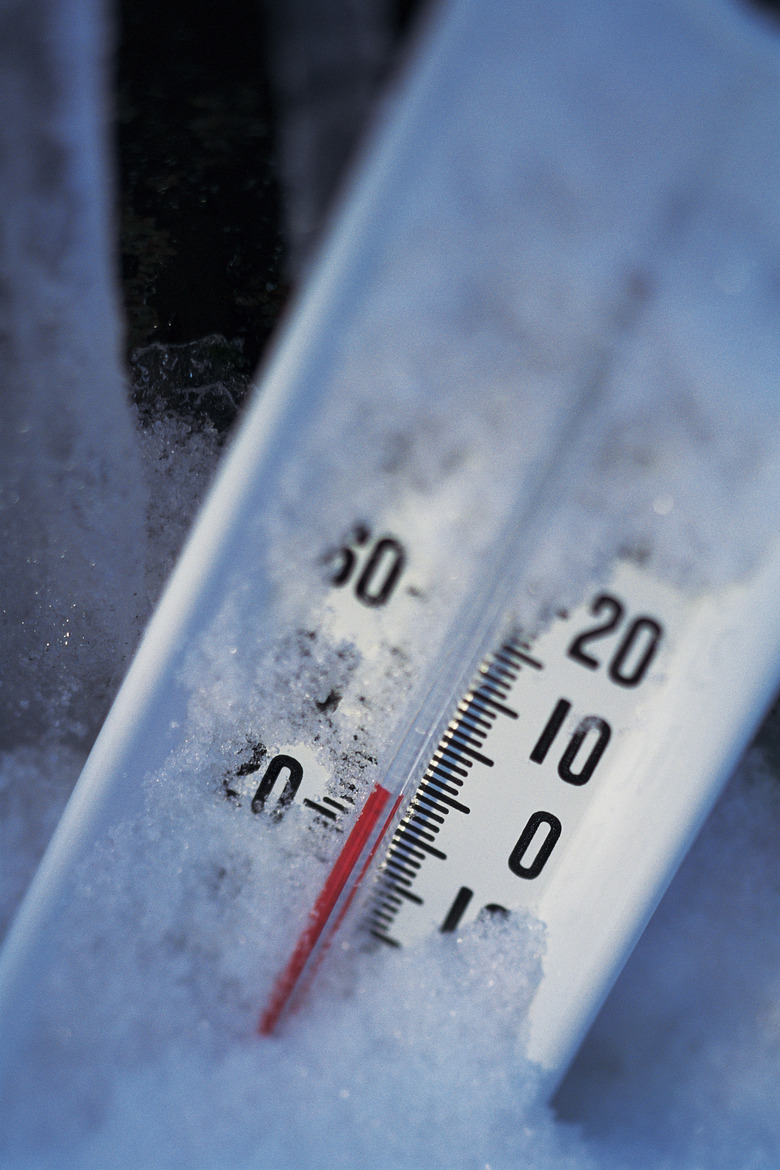Does Wind Affect A Thermometer?
It can feel cold enough to step outside when the temperature dives well below freezing, but a stiff wind makes it seem even colder. This is the wind chill effect, a familiar feature of weather reports for decades. After exposure to a particularly cold and windy day, many people wonder whether a chilly wind can lower the reading on a thermometer or affect other exposed objects, such as cars or water pipes.
Wind and Skin
Wind and Skin
When a blast of cold air blows over exposed skin, it strips away a thin layer of warm air at the surface. The faster the wind blows, the more quickly it erodes this layer. As the skin chills, the body attempts to generate a new layer of insulating air, a cycle that continues as long as the skin is exposed to the wind. In extreme cases, the internal temperature of the body can be lowered by heat loss through the skin. The danger of frostbite or hypothermia is why wind chill readings are reported.
Wind and Thermometers
Wind and Thermometers
Thermometers and other inanimate objects are not chilled by wind like living skin. This is because inanimate objects do not have the same internal heating system as living tissue. A thermometer can't read lower than the air temperature, which is the same whether the device is exposed to the wind or in a sheltered location. The only effect of wind on a thermometer is that moving air can shorten the time necessary for a thermometer to reach the air temperature when brought outside from a warm place.
Wind and Water
Wind and Water
Water is inanimate, so a wind chill temperature below freezing when the actual temperature is above freezing will not cause ice to form on a lake or in your car's radiator. Moving air does increase the rate at which water evaporates, however, including drying exposed skin. The moisture in your skin helps regulate its temperature, so increased evaporation is also part of the wind chill effect.
Wind Chill History
Wind Chill History
The earliest research on wind's chilling effect was carried out in Antarctica in the 1940s and focused on how rapidly water freezes at different wind speeds. The use of "wind chill factor" to explain how the air can feel colder than the air temperature dates back to the 1960s and 1970s. The National Weather Service chart in use today was most recently updated in 2001.
Cite This Article
MLA
O'Donahue, Kelvin. "Does Wind Affect A Thermometer?" sciencing.com, https://www.sciencing.com/wind-affect-thermometer-23922/. 24 April 2017.
APA
O'Donahue, Kelvin. (2017, April 24). Does Wind Affect A Thermometer?. sciencing.com. Retrieved from https://www.sciencing.com/wind-affect-thermometer-23922/
Chicago
O'Donahue, Kelvin. Does Wind Affect A Thermometer? last modified March 24, 2022. https://www.sciencing.com/wind-affect-thermometer-23922/

